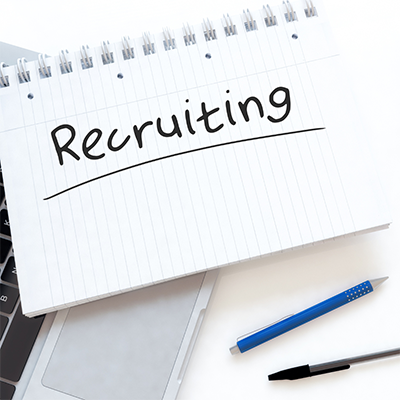Recruitment is an area of HR and people management that has been a challenge to many companies up and down the country following the pandemic. Many people have reassessed their priorities, retrained to new disciplines or professions and or just fancy a change of direction.
How can we as HR help support with a recruitment drive? It all comes down to the process in place, and in today’s blog I’ll show you how to create a successful process in 5 simple steps.
Step 1 – The Planning
“Failing to plan, is planning to fail” – Alan Lakein
I do love this quote, it can apply to all areas of HR and people management however, when it comes to recruitment step one is all about the planning.
When you start to look at recruiting it’s important to plan out the process so you know what will be completed and when, it also helps to eliminate any part of the process being missed too. This is especially important if you work in a big company where various team members such as “Heads Of…” have their own budgets and they recruit and manage their own stuff as well. Having a really clear process that everybody knows and that everybody abides by, can be pivotal to the success of your recruitment drives and in managing budgets.
I’ve seen it, particularly in bigger companies where different managers all do it in different ways and it just gets really confusing. This can then start to cause difficulties and inconsistencies in recruitment between different managers, all impacting the onboarding process and experience for your new employees, so it’s really, really beneficial for you to have a really clear process in place. I can’t emphasise this enough!
Another thing I see companies forgetting to do is to assess the vacancy as it appears. When somebody leaves, it’s human instinct just to replace that role and continue to complete the tasks that person who left did.
Instead, I encourage companies to challenge what is being done by the team and understand what needs to be done in the future. Use this as an opportunity to re-evaluate what each role consists of, as roles and business changes over time. This can be a key phase in the recruitment process and if you’re in HR then challenging the managers to think about how the team workload is distributed, to think about the headcount that’s needed in the team, this can lead to difficult conversations as often they can be precious about headcount and needing to justify it.
Ask; do you still need that role? Can that work actually be re-distributed within the team? Are there some tasks that can be streamlined/removed, or simplified?
So how can we support people managers and businesses with getting the process right? What does a good process look like?
In my experience creating a flowchart is the most effective resource for all recruiting teams to understand what’s needed. These can cover everything from the planning stage through to the offer stage and everything in-between.
Step 2 – Job Spec and Budgets
Many managers simply want to get to the advertising process as quickly as possible, and in some cases, this may be necessary, and therefore having the pre-advertising process in place. This includes things like:
- Assessment of the role and if it’s needed,
- Budgets in place for the role
- An updated copy of the JD/ personal spec – you’re going to want to ensure everything is covered here, so step one above is very important. I’ve seen it time and time again where new recruits (and existing employees) have refused to do tasks as they’ve been omitted from their JD.
Step 3 – Advertising
When you get to the advertising stage there are also many things to consider making the most of your budgets and time, as it can be both costly and time consuming to get this wrong.
- Think about where is best to advertise the role, is it a specialist role, industry specific etc.
- Check the wording of your advert, and then check it again! to make sure that the wording is appropriate, that you’re not going to fall foul of any discrimination.
- Be clear to the candidates on what the timescales of the process are, deadlines, closing dates and when they’ll hear back from you or not.
Step 4 – The Interview
Once you’ve got your candidate list then you’ll be ready to start the interview process, what will that look like? Where will it be held? Who will conduct it? What is the format?
Anyone who’s conducted interviews will know they can be challenging, emotions are high, so it’s good practice to think about how you as the recruiter can make the process as easier as possible for all. From choosing a nice cool and airy room to ensuring communication for both interviewer and interviewee is clear and timely.
Step 5 – The Outcome
The outcome process should be a great experience for both those who are successful and unsuccessful at securing roles within your business. Feedback will be important to those unsuccessful and so should be a consideration of time within the process too, for those who wish to receive it. Completing the process for all candidates is the right thing to do.
For those successful candidates it’s now that you would consider completing all the recruitment checks including references and right to work etc. This can take some time, so communication is key.
After over 20 years experience in HR and with a lot of that time spent supporting recruitment drives, I’ve created some really useful documents including, recruitment flow charts, interview questions, recruitment forms, advertising templates and more, which you can access freely as a member of MyPeopleClub (link site)

